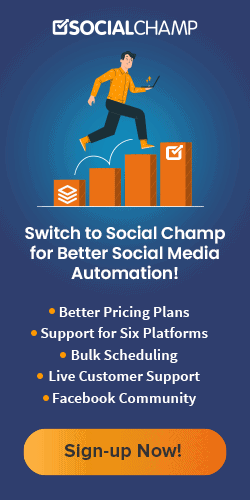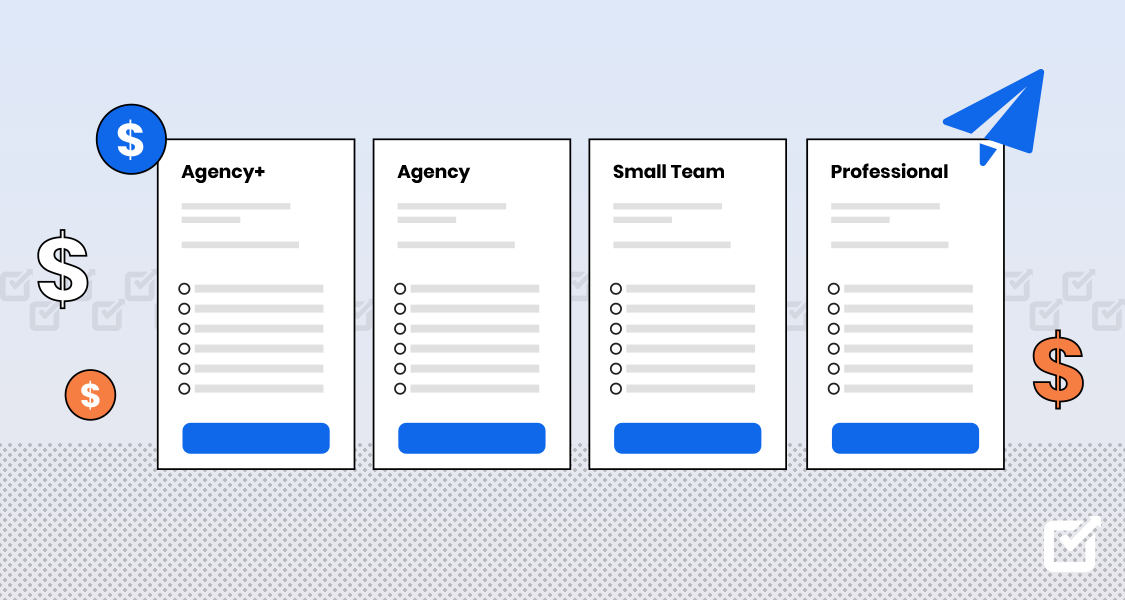Imagine a world where everything is synced, color-coded, and just a click away.
That’s the power of a shared calendar.
Whether you’re a busy executive, a hectic social media agency, or simply someone who values their time, the right calendar can transform your life.
In this guide, we’ll uncover the 10 best shared calendars of 2024.
We’re talking about sleek designs, smart features, and options for social media managers.
Get ready to say goodbye to scheduling problems and hello to organized efficiency!
Let’s start!

Save Time With Social Champ’s All-In-One Calendar!
View, edit, delete, and reschedule your current and future social media posts via Social Champ’s all-in-one social media calendar.
Short Summary
- A shared calendar is a digital tool for collaborative scheduling, enabling multiple users to view, edit, and manage events together.
- Key features include multi-user access, real-time updates, event creation/editing, permission settings, notifications, and integration with other tools.
- Shared calendars improve productivity, communication, and consistency, helping teams plan ahead and avoid last-minute stress.
- Social Champ’s shared calendar offers seamless integration with social media platforms, drag-and-drop scheduling, team collaboration, and analytics.
- Other popular shared calendars in 2024 include Google Calendar, Microsoft Outlook Calendar, Apple Calendar, Trello Calendar Power-Up, Asana Calendar, Toggl Plan, Teamup Calendar, Calendly, and ClickUp Calendar.
- Each tool has unique features and is suited for different purposes, whether managing a team or scheduling client meetings.
What Is a Shared Calendar?
A shared calendar is a digital scheduling tool that allows multiple users to collaboratively view, edit, and manage events or schedules.
Shared calendars are designed to accommodate teamwork and improve coordination among groups.
Key Features
- Multiple User Access: The fundamental feature of a shared calendar is that it can be accessed by several users. This could range from a small family unit to large corporate teams.
- Real-time Updates: When one user makes a change, it’s immediately visible to all other users with access. This ensures everyone has the most current information.
- Event Creation and Editing: Users can add new events, modify existing ones, or delete outdated entries. This might include setting event times, adding locations, or including notes and attachments.
- Permission Settings: Administrators can control who can view, edit, or manage the calendar. This allows for different levels of access based on roles or needs.
- Notifications and Reminders: Most shared calendars offer automated alerts for upcoming events, changes to the schedule, or important deadlines.
- Integration Capabilities: Many shared calendars can integrate with other productivity tools, email systems, or project management software for a more seamless workflow.
- Cross-platform Accessibility: Users can often access the shared calendar from various devices, including computers, smartphones, and tablets.
Featured Article: What Is Social Commerce? Here’s Everything You Need to Know in 2025
Benefits of Using a Shared Calendar
Using a shared calendar offers several advantages, from enhancing productivity to improving communication.
Here are some of the key benefits:
First off, it’s like having a single brain for your team. Everyone can see what’s happening, when, and who’s doing what. No more double-booking your content or forgetting that super-important post.
Plus, it helps you see the big picture. You can look ahead and spot any gaps in your content. No more scrambling to fill those empty spaces!
And let’s talk about teamwork. A shared calendar makes collaborating, sharing ideas, and giving feedback easy. It serves as a digital sticky note board where everyone can chime in.
Want to save time and stress? You can easily plan ahead! A calendar helps you schedule posts in advance, so you’re not panicking at the last minute.
Consistency is key, and a calendar keeps your posts flowing smoothly. Your audience will love the regularity.
Want to know what’s working? With a shared calendar within a tool like Social Champ, you can also track your posts and see what’s getting all the engagement.
Then, use that information to make your content even better.
Lastly, things change fast in the social media world. In fact, in just 8 years, social networking grew by 138.2%! This means you need to be ever-ready to accommodate change.
And with a shared calendar, you can quickly adapt to trends, news, or whatever life throws your way.
Featured Article: Top Social Media Content Planning Trends for 2025: A 19-Step Action Plan
The 10 Best Shared Calendars for 2025
Now that we understand the benefits of using a shared calendar, let’s explore the ten best options available in 2024.
These tools have been selected based on their features, user-friendliness, and overall effectiveness in enhancing productivity and coordination.
Social Champ’s Shared Calendar

Social Champ’s Shared Calendar Social Champ’s shared calendar on social media stands out for its comprehensive features and user-friendly interface.
Designed to streamline social media management, this tool allows teams to collaborate effectively, schedule posts, and view all upcoming content in a single, unified calendar.
Its robust integration with various social media platforms ensures that your campaigns run smoothly, making it an indispensable tool for marketing teams and agencies.
Social Champ’s shared calendar also has access control. You can assign the team the ability to delete, edit, and approve posts.
You can also limit access with a password shared with specific team members to ensure the confidentiality of your posts.

Access controls in Social Champ’s Shared Calendar Key Features:
- Multi-Platform Integration: Connects with major social media platforms like Facebook, Instagram, Threads, Twitter(X), LinkedIn, YouTube, TikTok, Pinterest, Google My Business, Blueksy and Mastodon.
- Drag-and-Drop Scheduling: Easily schedule and reschedule posts with a simple drag-and-drop interface.
- Team Collaboration: Assign tasks, leave comments, and review post drafts within the calendar.
- Analytics and Reporting: Track the performance of your social media campaigns directly from the calendar.

Organize Your Workflows With Social Champ!
Collaborate seamlessly with your team, avoid scheduling conflicts, and boost productivity. Try now for FREE!
Google Calendar

Google Calendar Google Calendar is a popular choice due to its simplicity and extensive integration capabilities.
It seamlessly integrates with other Google Workspace tools, making it a go-to option for both personal and professional use.
Key Features:
- Cross-Platform Syncing: Syncs across all devices, ensuring you’re always updated.
- Event Invitations: Send and manage event invitations with ease.
- Reminders and Notifications: Set reminders for important events and receive notifications on your devices.
- Shared Calendars: Create multiple shared calendars for different purposes.
Microsoft Outlook Calendar

Microsoft Outlook’s Calendar Microsoft Outlook Calendar is a tool that integrates well with other Microsoft Office applications. It’s ideal for business environments where Microsoft Office is already in use.
Key Features:
- Email Integration: Directly integrates with Outlook email for easy event scheduling.
- Shared Access: Grant different levels of access to team members.
- Meeting Scheduling: Schedule meetings and check availability within your organization.
- Task Management: Integrates with Microsoft To-Do for comprehensive task management.
Featured Article: Facebook Stories – A Great Marketing Tool At Your Fingertips
Apple Calendar

Apple Calendar Apple Calendar is perfect for users within the Apple ecosystem.
It offers seamless integration with other Apple devices and applications, providing a cohesive experience.
Key Features:
- iCloud Sync: Syncs events across all Apple devices.
- Natural Language Input: Add events using natural language, such as “Lunch with John at 12 PM.”
- Shared Calendars: Easily share calendars with family and colleagues.
- Time Zone Support: Automatically adjusts events based on your time zone.
Trello Calendar Power-Up

Trello’s Calendar Trello, known for its project management capabilities, offers a Calendar Power-Up that transforms your boards into visual schedules.
It’s great for teams that use Trello to manage tasks and projects.
Key Features:
- Visual Task Management: View your Trello cards on a calendar.
- Drag-and-Drop: Easily move tasks around by dragging and dropping cards.
- Due Dates and Deadlines: Set and track due dates for tasks and projects.
- Team Collaboration: Collaborate on tasks and see updates in real time.
Asana Calendar

Asana’s Calendar Asana is another powerful project management tool with a built-in calendar feature. It helps teams plan, organize, and track work efficiently.
Key Features:
- Project Timelines: Visualize project timelines and milestones on the calendar.
- Task Dependencies: Manage task dependencies and ensure timely completion.
- Custom Views: Customize calendar views to fit your workflow.
- Integration: Integrates with other tools like Slack, Google Drive, and Microsoft Teams.
TogglPlan

Toggl Plan’s Shared Calendar Toggl Plan is a project management tool that helps teams visualize and manage their workload efficiently.
Key Features:
- Drag-and-Drop Scheduling: Easily assign tasks and manage projects.
- Time Tracking: Integrated time tracking to monitor task duration and productivity.
- Team Collaboration: Collaborative features for efficient teamwork and communication.
- Task Management: Flexible task management to accommodate diverse project needs.
- Custom Views: Customizable calendar views for effective project planning and tracking.
Teamup Calendar

Teamup Calendar Teamup Calendar is a versatile tool that caters to various scheduling needs, from business to personal use.
It offers extensive customization options and is especially useful for large teams.
Key Features:
- Color-Coded Events: Use different colors to categorize events.
- Access Permissions: Set custom access permissions for different users.
- Sub-Calendars: Create multiple sub-calendars under one main calendar.
- Mobile Access: Access the calendar from any device with the mobile app.
Calendly

Calendly Calendar Calendly is a scheduling tool that simplifies the process of booking meetings and appointments. It’s widely used by professionals who need to manage client bookings efficiently.
Key Features:
- Automated Scheduling: Allow others to book time slots based on your availability.
- Integration: Integrates with Google Calendar, Outlook, and other tools.
- Customizable Links: Create personalized scheduling links for different types of meetings.
- Reminders and Confirmations: Send automated reminders and confirmations to attendees.
ClickUp Calendar

ClickUp Calendar ClickUp is an all-in-one productivity platform with a powerful, free shared calendar tool.
It’s suitable for individuals and teams looking for a comprehensive tool to manage tasks, projects, and schedules.
Key Features:
- Unified Calendar: View tasks, projects, and deadlines in one place.
- Custom Views: Customize calendar views to match your workflow.
- Collaboration: Collaborate on tasks and projects within the platform.
- Integration: Integrates with tools like Slack, Google Drive, and GitHub.
Conclusion
Choosing the right shared calendar can significantly enhance your productivity and coordination.
Each of the ten tools listed above offers unique features and benefits, catering to different needs and preferences.
Whether you’re managing a team or scheduling client meetings, there’s a shared calendar out there for you.
Social Champ’s shared calendar stands out as the leading tool for social media management, offering robust features that streamline collaboration and scheduling.
However, the best choice ultimately depends on your specific requirements and the ecosystem you operate within.

























